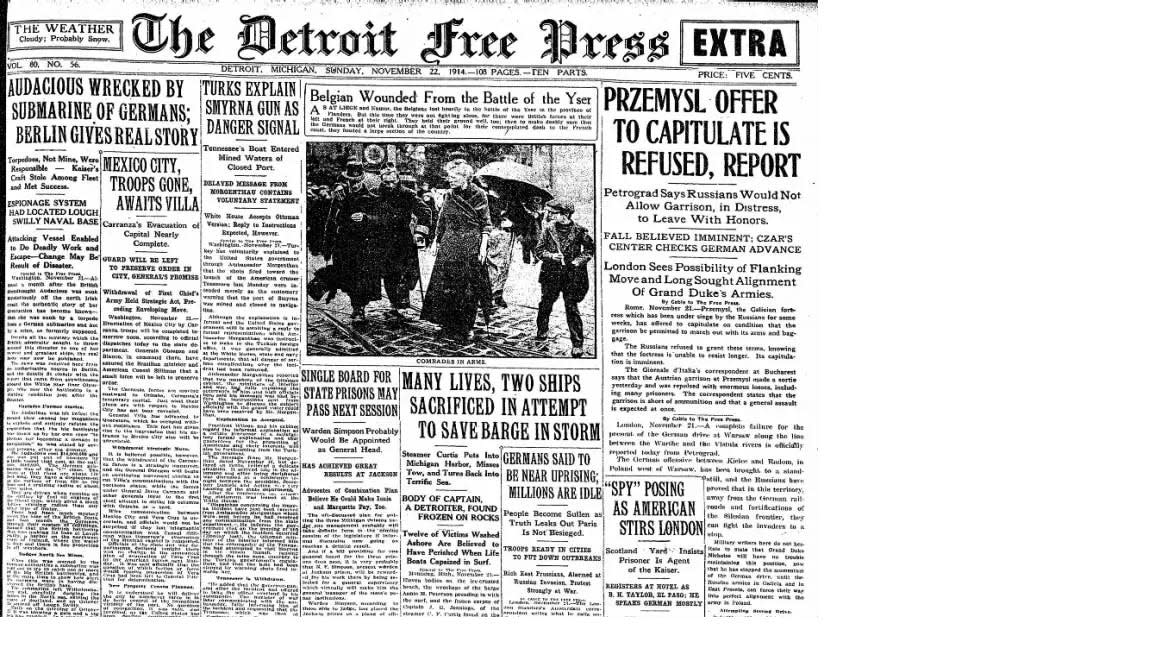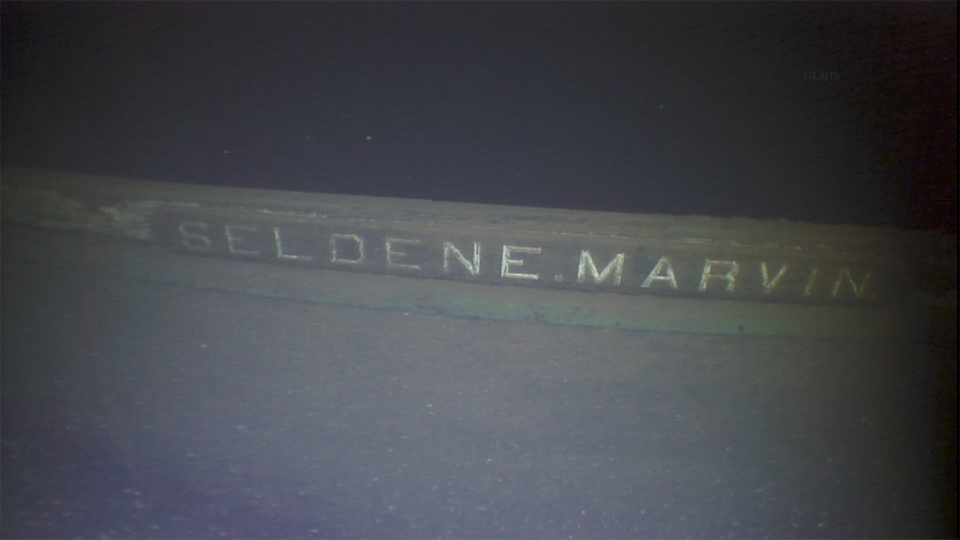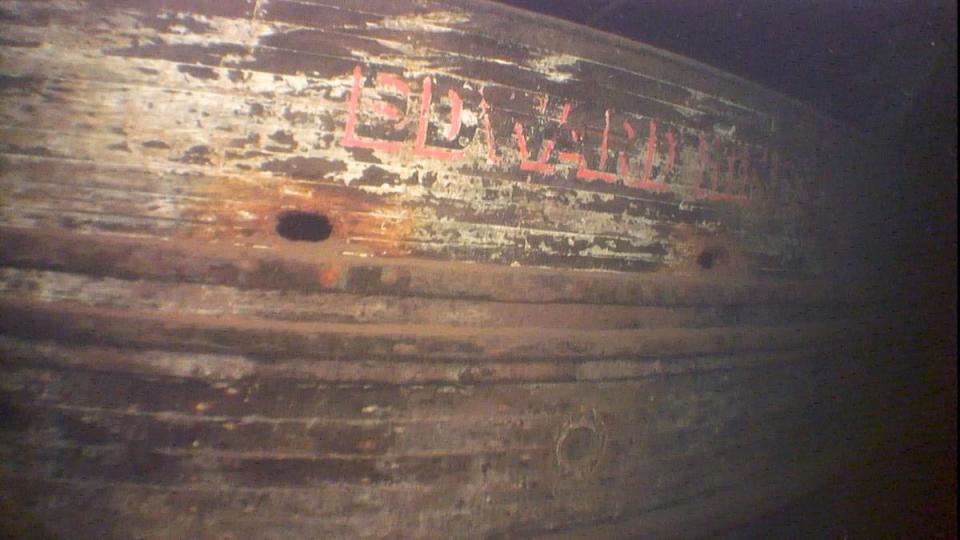Once lost, Lake Superior shipwrecks are found, giving 100-year-plus story a new ending

- Oops!Something went wrong.Please try again later.
The story of three tragic shipwrecks on Lake Superior got a new ending Thursday, more than a century after the vessels were lost, with the announcement that the Great Lakes Shipwreck Historical Society had finally found two of them.
All three ships — the steamer C.F. Curtis, which was being towed by two schooner barges, Selden E. Marvin and Annie M. Peterson, from Baraga to Tonawanda, New York, all with loads of lumber — went down in a violent storm on Nov. 18, 1914.
There were no survivors. The final tally of the dead: 28.
In many ways, the historical society said, the discovery of these shipwrecks, sunk beneath the lake's surface, offers a window to the past, because the cold water preserves the artifacts for decades. The wrecks also, to the families of the mariners and passengers who vanished, provide peace, and a glimpse of their lost loved ones' watery graves.
"It not only solved a chapter in the nation’s darkest day in lumber history," society board member and maritime historian, Ric Mixter, said of the discoveries. "But it also showcased a team of historians who have dedicated their lives towards making sure these stories aren’t forgotten."
He added: "The combined losses of the C.F. Curtis, Selden E. Marvin and Annie M. Peterson have comprised one of the more tragic stories of shipwreck on the Great Lakes and certainly became one of the Lake Superior’s enduring mysteries."
There are an estimated 6,000 shipwrecks in the Great Lakes — 550 in Lake Superior alone — that led to a staggering 30,000 deaths, and to this day, along with the thousands of ships that were snatched from the surface by the forces of nature, the Peterson is still missing.
Ships sacrificed to save barge
When the Free Press initially reported the Great Lakes tragedy on the on Nov. 22, 1914, front page, tucked among other sad reports detailing incidents from the first Great War, under the hard-to-miss headline: "Many Lives, Two Ships Sacrificed in Attempt to Save Barge in Storm."
More: Lake Superior shipwreck Nucleus found after 150 years is in 'surprisingly good condition'
More: After generations of boy-only births, a West Michigan baby girl ends the streak
The words were followed by other, increasingly dramatic, headlines on the wrecks in smaller type, which was the style back then, and a report describing how the wreckage was so terrible that bodies had been found washed up on the "ice-crusted beach," including the "frozen corpse" of the steamship’s captain, J.G. Jennings.
And yet, three paragraphs in, the report also mentioned valor, hailing the crew’s courage and will to survive.
It declared: "There have been few finer stories of bravery on the lakes than the one revealed today," referring to the steamer captain's "desperate loyalty" and described the plight of "helpless men" who were clinging to a "drifting barge."
The wrecks, along with the news report about them, also gives Michiganders alive today a sense of what it was like to travel on the Great Lakes during dangerous conditions, long before the Coast Guard and modern technology to predict the weather, communicate with others and navigate.
At the time of the report, much was still unknown, including the fate of more than half of the crew and one of the ships, but the article speculated: "It is virtually certain" that "the heroism" that drove the men to save others "cost the lives of all aboard."
The mapping of Lake Superior
The historical society, which has a shipwreck museum at Whitefish Point, has been searching for wrecks by mapping more than 2,500 miles of Lake Superior with Marine Sonic Technology using side-scan sonar, a sonar system for detecting and imaging objects on the seafloor.

Multiple sonar sensors send and receive acoustic pulses that help map the lake floor and detect objects.
In 2021, the society located nine lost vessels including the C.F. Curtis.
A year later, in the summer of 2022, the society’s research vessel, the David Boyd, found a second shipwreck a few miles away from the Curtis. Upon closer inspection, it became apparent that the Marvin also had been found, leaving just one missing ship out of the trio.
The society called the finds “significant historic discoveries in American history” because the ships were part of the Hines Lumber Co., one of the largest timber enterprises at the time. Between 1870 and about 1900, Michigan was the nation's leading lumber producer, and in the early 20th century the lakes were vital to transporting goods.

The Free Press, in 1914, documented the daring attempt to save the ships, and the certainty loved ones had that the sailors would survive their ordeal, describing the effort as a "hard run with the gale" and a "blizzard fast blanketing the gray sky."
Night came. Snow swirled. The tow lines heaved.
And even as Capt. Jennings' wife, Marie Jennings, was informed that her husband's vessel was in peril, she "expressed an unshakable optimism upon hearing the news," having faith that he had "weathered many fierce gales" during his 20 years navigating the lakes and "would come out of the wreck unharmed."
But all three ships vanished into the lake and the widow never saw her husband alive again.
"Somewhere out there in the darkness the Curtis and the Marvin parted from the Peterson," the Free Press reported. "There was no easing on the towline, no let up in the racing of the seas, no warning to the men ahead fighting to bring the little fleet safe into the harbor."
Contact Frank Witsil: 313-222-5022 or fwitsil@freepress.com.
This article originally appeared on Detroit Free Press: Great Lakes shipwrecks found, giving sad story of loss a new ending

